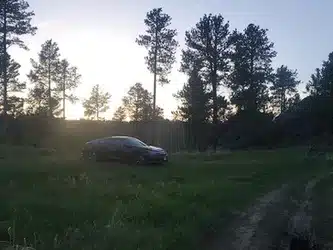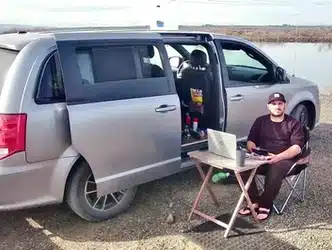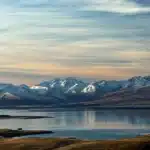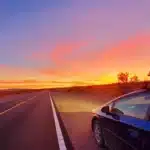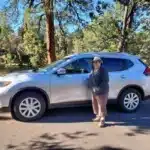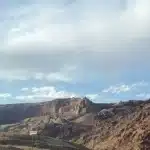Thirty miles east of Burns, Oregon is Stinkingwater HMA – 78,000 acres of BLM land home to Warm Springs reservoir, a herd of wild horses, and plenty of serene dispersed camping. My cousin had joined my travels for a couple of months, and we stopped at Stinkingwater on our way to Roseburg. Close to the access road, we made camp in a cozy spot nestled amongst swaths of sedge and wheatgrass and juniper trees.

While my cousin and I gathered firewood, my dog Judy explored, sniffing around tufts of needlegrass and Idaho fescue until she discovered some rotting deer heads nearby. I could see her little ears flopping up and down as she navigated the rocky slopes dotted with bottlebrush squirreltail, wildrye, and sage.

Gazing out towards Stinkingwater Mountain, I could hear nothing but Judy’s occasional yip of discovery and the wind gently passing through. I took a deep breath, sucking in fresh air – a welcome contrast to the oppressive humidity I experienced growing up in South Carolina. This was the first moment I took stock of where I was – after a grueling van build-out and a long trek from the east coast, I had finally arrived in the picture-perfect setting I’d dreamed of ever since deciding to pursue van life.
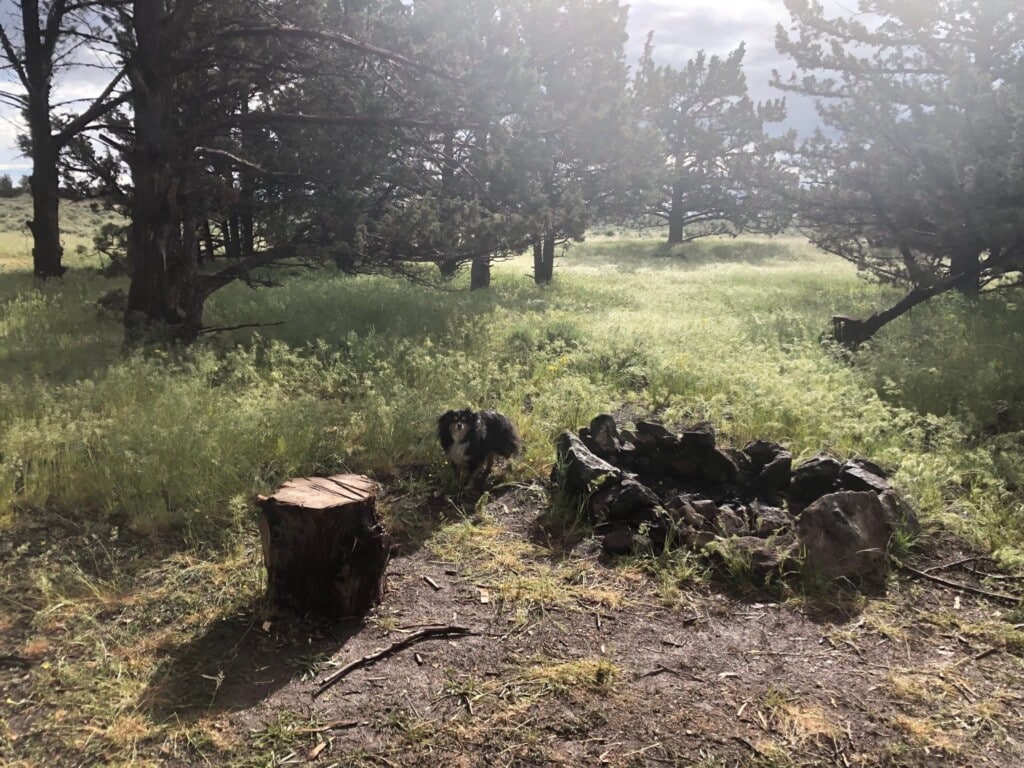
After settling in for the night, we listened to coyote calls off in the distance. Their sounds punctuated the horses’ grunts and whinnies, which became louder and clearer as the herd passed through our campsite on its way towards Buzzard Ridge. A light rain tapped the roof of the van, and we fell asleep.
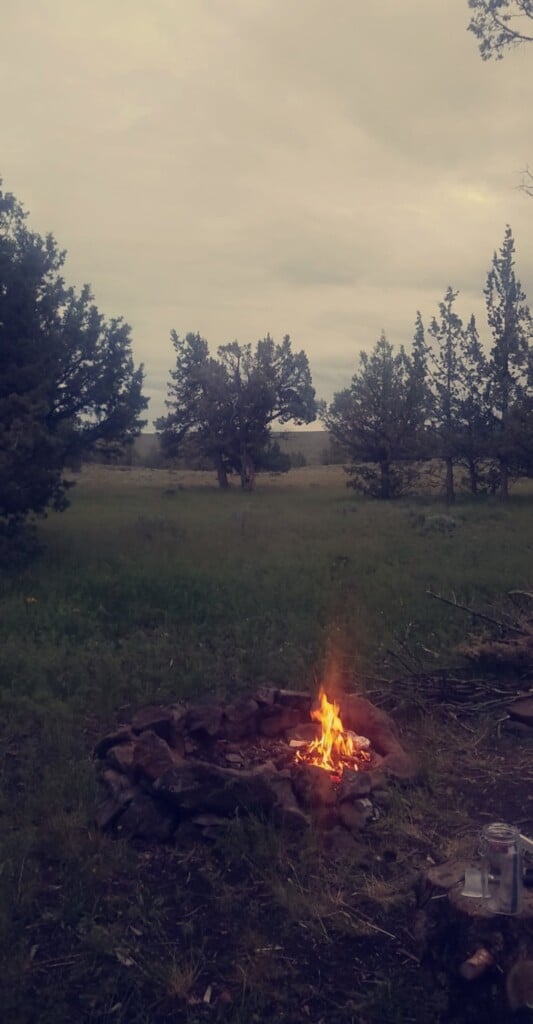
But we had forgotten to check the weather. Rookie mistake.
While the path to our site felt sturdy enough for my cargo van on the way in, we had failed to account for overnight changes in weather. Worse, we didn’t realize that Stinkingwater is not only home to a variety of beautiful horses, but it’s also known for its spring sites. As we slept, the soft sprinkle had morphed into a torrential downpour and summoned to the surface of our camp that unholy groundwater that is the bane of van dwellers everywhere.
We were hopelessly trapped in a growing mud pit.
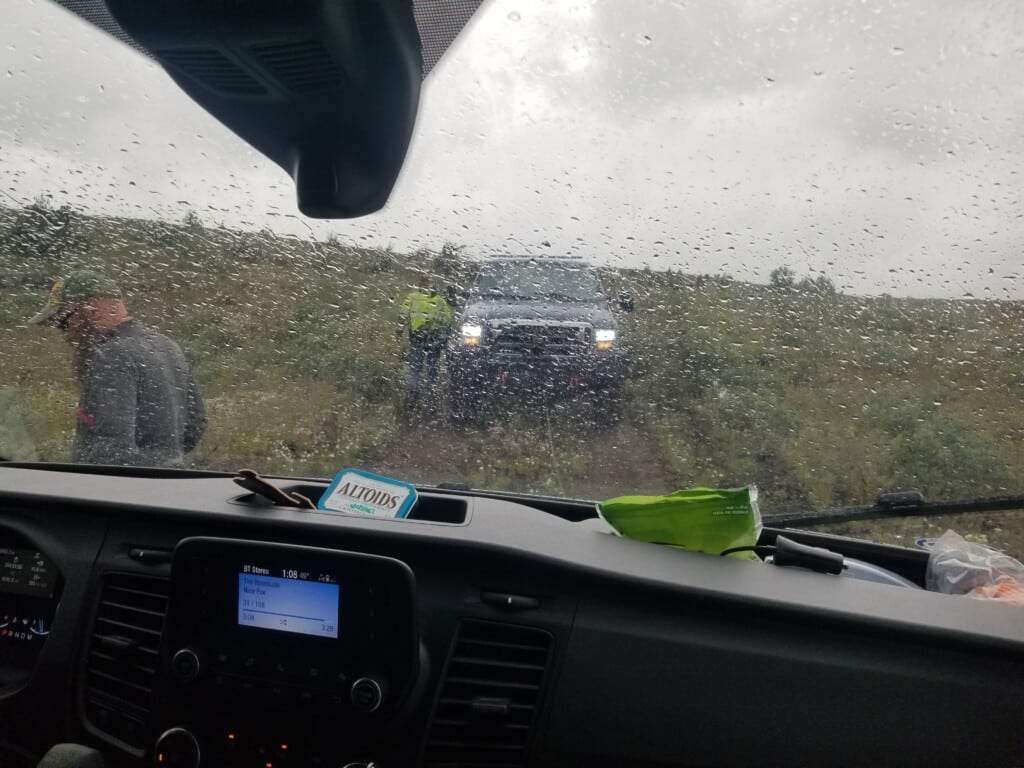
Two years into van life, I was still getting my feet wet. Only in this case, my feet were the van’s tires, and the wet part was the mud they were now stuck in. Luckily, a company in Burns was familiar with the area and hauled us out before day’s end. With the benefit of hindsight, I’m glad I had the experience, $550 for a tow be damned! I learned about groundwater, started picking drier spots to park, and got better about checking radar
The Instagram #vanlife may be desirable in many ways, but it paints a monolithic image of a lifestyle that’s much richer and more complicated than idyllic views and living life without a care in the world. I’ve discovered great value in learning from the experiences of fellow van lifers and growing from the trials and tribulations of roughing it through any number of inconveniences: Intense heat, lack of reception, taking a dump in the desert, mosquitoes, isolation, sleeping in a Cracker Barrel parking lot.
While we take respite in our customized comforts – I need many, many fans blowing and bug screens so I can crack my windows – we grow the most through adversities faced off the beaten path.

Van life is absolutely an escape from the metaphorical mud that is life’s typical timeline: School > office > house > death. But the mud keeps us grounded, too. It reminds us that we are human, we are part of this world, and we risk losing our connection to it if we avoid experiencing pain or discomfort.
For me, living in a van is about accepting this and accepting who you are amidst all that messiness. I’ve discovered my durability, my ability to survive and adapt. I’m excited to share some of my journey with you, and I can’t wait to hear about yours! Even if we’re just laughing together about getting stuck in the mud.




